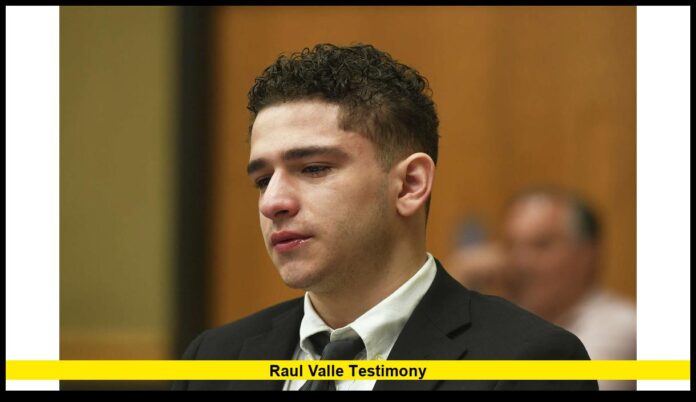The murder trial of Raul Valle has captivated Connecticut as the 20-year-old defendant’s emotional testimony becomes the focal point of a case that has left jurors deeply divided. As deliberations continue for the second day, the jury remains deadlocked on all charges, including the fatal stabbing of 17-year-old James McGrath at a Shelton house party in 2022.
The Pivotal Testimony That Changed Everything
Valle’s decision to take the stand in his own defense marked a dramatic turning point in the trial. In a highly unusual and risky legal strategy, Valle provided emotional testimony about the night that changed multiple lives forever. During his appearance on the witness stand, Valle admitted to the stabbing but claimed he acted out of fear and self-defense.
“I just remember, immediately after I got hit, I fell ,I swung,” Valle testified. “What were you swinging at? Anything.” This raw admission revealed the chaotic nature of the altercation that prosecutors say began as teenage tension and escalated into a deadly confrontation.
Valle described being “just stabbing in every direction” during the fight, painting a picture of a panicked young man who claimed he was defending himself. His testimony included details about how he received the knife from friend Jack Snyder during the car ride to the party, though Valle maintained he didn’t know he was going to the gathering until he arrived.
The Charges and Legal Stakes
Valle faces one count of murder, two counts of first-degree assault, and one count of second-degree assault. If convicted, the murder charge carries a 60-year sentence. The severity of these charges explains why Valle has rejected two plea deals offering 40 years in prison.
The case centers on the May 14, 2022 incident where Valle allegedly pulled out a knife and stabbed four people in the scuffle. Three survived. James McGrath did not. McGrath, a 17-year-old Fairfield Prep lacrosse player, became the tragic victim of what started as a typical high school party.
Jury Struggles with Complex Case
The trial has presented significant challenges for the jury of six men and six women. After deliberating for around two hours, a jury member sent a note to the judge saying they were hopelessly deadlocked on the murder charge 11 to 1. This stark division highlights the complexity of determining whether Valle’s actions constituted self-defense or murder.
The jury requested to listen to Valle’s testimony again after remaining deadlocked on all charges, demonstrating the critical importance of the defendant’s own words in their decision-making process. Legal experts note that having a defendant testify in a murder case is both unusual and risky, but potentially necessary in self-defense claims.
The Legal Strategy Behind the Testimony
Defense experts have weighed in on the unusual decision to have Valle testify. “So I think that it’s very difficult in a self-defense case for a jury to not hear from the defendant,” explained legal analyst Rotunno. “Sometimes, you can establish it through other witnesses, but if you have a defendant that can take the stand… I almost think it’s necessary in these cases.”
The testimony strategy appears designed to humanize Valle and present his version of events directly to the jury. By describing his fear and confusion during the altercation, the defense hopes to convince jurors that Valle’s actions were justified self-defense rather than premeditated murder.
What’s Next for the Case
As deliberations continue, the deadlocked jury must wrestle with fundamental questions about self-defense, intent, and the tragic consequences of teenage violence. The case has already drawn significant media attention, with Court TV providing extensive coverage of the proceedings.
The Valle testimony continues to be the most scrutinized aspect of the trial, as it represents the defendant’s only chance to tell his side of the story directly to those who will determine his fate. Whether the jury can overcome their deadlock and reach a unanimous verdict remains to be seen.
This high-profile case serves as a stark reminder of how quickly teenage conflicts can escalate into life-altering tragedies, leaving families devastated and communities searching for answers about youth violence and its prevention.
This developing story will be updated as the jury continues deliberations and new information becomes available.
